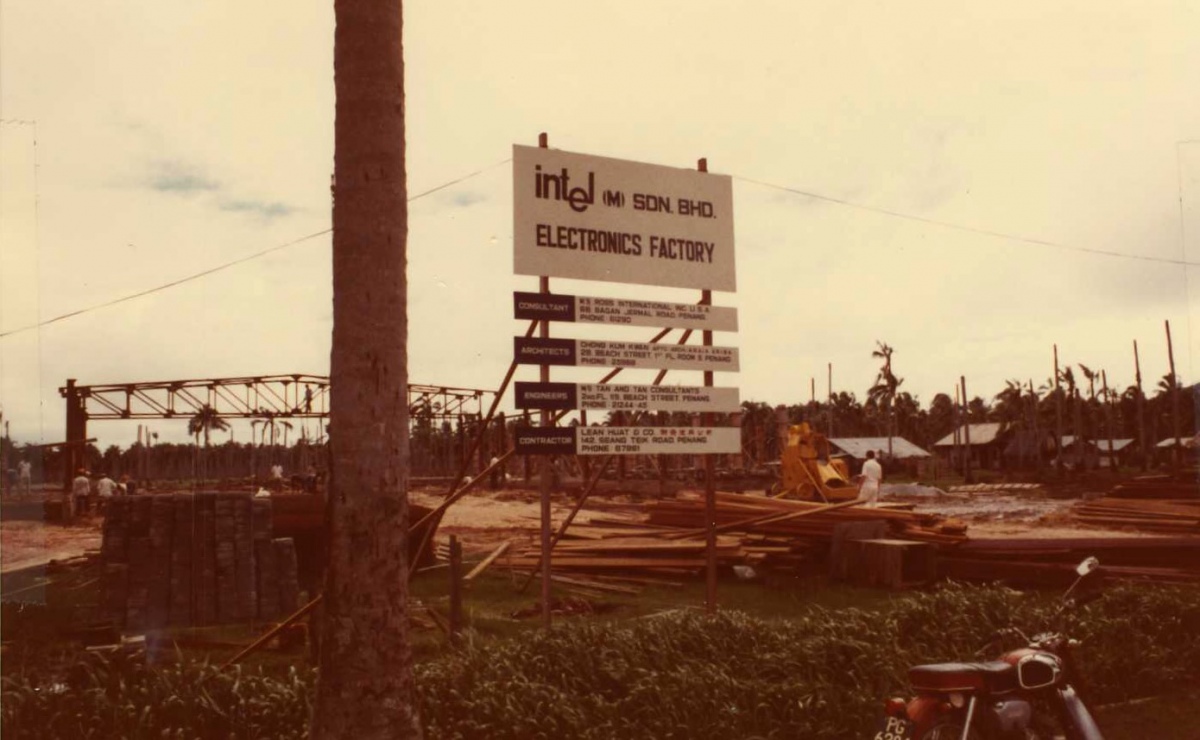New global tech hub: How Malaysia is conquering the world chip market.
As the "chip war" between Washington and Beijing intensifies and trade restrictions tighten, companies are eager to diversify their manufacturing capabilities. The strategic location of Southeast Asia and its long-standing economic ties with China and the US make the region an attractive site for new factories: Thailand and Vietnam are aggressively encouraging manufacturers to expand by offering incentives.
Currently, Malaysia holds an advantage: its central location in Southeast Asia makes it an ideal gateway for semiconductor companies seeking access to both regional and global markets. Its proximity to major manufacturing hubs in China and Taiwan enhances its logistical benefits.
Since the 1970s, the country has been riding a rising "technology wave," attracting world-renowned electronics stars. It has established a free trade zone on Penang Island, built industrial parks, warehouses, and roads, offers tax incentives, boasts a cheap labor force, and has a large English-speaking population. Now, its goal is to increase its share of global semiconductor exports from 7% to 15% by 2030.
A New Hotspot on the Chip Map
Semiconductors — critical components for everything from smartphones to rockets — have become central to the technological war between the US and China. Supply chains are now risky, as the leading producer of advanced chips, TSMC, is based in Taiwan, which China has repeatedly threatened to reclaim by force.
Amid geopolitical uncertainty, various companies in search of diversification are increasingly looking at Malaysia. In 2023, Penang Island, which houses the country's main manufacturing capacities, attracted a record $13 billion in foreign direct investment — more than the total for the previous seven years combined.
Everything started in Penang. In the 1970s, Intel, investing $1.6 million with partners, transformed a muddy rice field on the island into its first manufacturing facility outside the US and became a pioneer of the "Silicon Valley of the East". Subsequently, a full-fledged testing center and a development and design center were opened there.
Since then, thanks to government policies that provided tax incentives and holidays, improved logistics, and attracted new investments, the country has earned a reputation as a reliable contract manufacturer and tester.
 3
3 A new stage of development began in 2019. "After 20 years of investing in China, it became clear that we needed to diversify our presence. We studied 30 countries across three continents and settled on Malaysia. They understand the needs of the semiconductor industry, have a developed ecosystem, and government support," explained Andreas Gerstenmayer, CEO of Austrian manufacturer AT&S.
After the pandemic exposed flaws in global supply chains, interest in Malaysia surged. This trend accelerated when the "chip war" between the US and China erupted.
"American, European, and even Chinese companies wanted to diversify operations outside of China. Concerns about Taiwan spurred investments in Malaysia," explained Malaysia's Minister of Investment, Tengku Zafrul Aziz.
Market participants agree: Malaysia is becoming a new hotspot for semiconductor factories. "Kuala Lumpur has a well-developed infrastructure with nearly 50 years of experience in assembly, testing, and packaging," explained Kendrick Chan from the London School of Economics.
This attracts global giants: in 2021, Intel announced more than $7 billion in investments for a new packaging plant in Penang, which is expected to create 9,000 jobs. It was anticipated that it would launch in 2024, but due to financial issues, Intel has paused construction.
"Our strategic decision to invest in Malaysia is based on its diverse talent pool, developed infrastructure, and reliable supply chain," explained Intel's director in Malaysia, Ike Kin Chong.
Another American chip giant, GlobalFoundries, in 2023 opened a large hub in Penang "to support global manufacturing operations." The leading German chip developer Infineon is also expanding its capabilities in Malaysia.
 4
4 Malaysia has become the sixth-largest exporter of semiconductors in the world (7%) and holds 13% of the packaging, assembly, and testing market. In 2023, exports of semiconductor components and integrated circuits from the country rose to $81.4 billion.
 5
5 "For a country with 35 million people, having such a significant impact on the global semiconductor market is simply fantastic," acknowledged David Lacy, a top executive at one of the world's largest lighting manufacturers, Osram.
Ambitious Plans
Malaysia has established itself in the final segment of the semiconductor supply chain: packaging, assembly, and testing. This process is traditionally considered less complex and less valuable.
In May, the Prime Minister announced an unprecedented willingness to invest $107 billion — double that of the EU's ($47 billion) and the US's ($52 billion) semiconductor programs. The country aims to create at least ten companies in chip design and packaging with annual revenues ranging from $210 million to $1 billion.
Malaysia is also developing a semiconductor IC design park (Malaysia Semiconductor IC Design Park) near the capital, Kuala Lumpur. Investors are offered tax incentives, subsidies, and a visa-free regime. The park has entered into partnership agreements with industry giants Cadence Design Systems and Arm Holdings.
 6
6 The main goal of the $107 billion project is to increase the share of global exports from 7% to 15% by 2030. However, there is a caveat: despite the promised $5.3 billion in budget funds, uncertainty remains about whether the remaining $100 billion can be secured. Various risks and negative factors could hinder investments.
Brain Drain and Workforce Shortage
To achieve its ambitious goals, Malaysia needs skilled personnel, and there is a problem with that. Many graduates from local universities seek higher salaries in neighboring Singapore. There, a junior engineer can earn $2,100-2,600 per month, while the compensation in the same sector in Malaysia is around $500.
As a result, the country is short of 60,000 engineers to meet its ambitions in the chip industry, while universities produce only 5,000 new specialists annually.
"The best engineers, scientists, and economists have left, so we need to develop incentives to encourage them to return," <